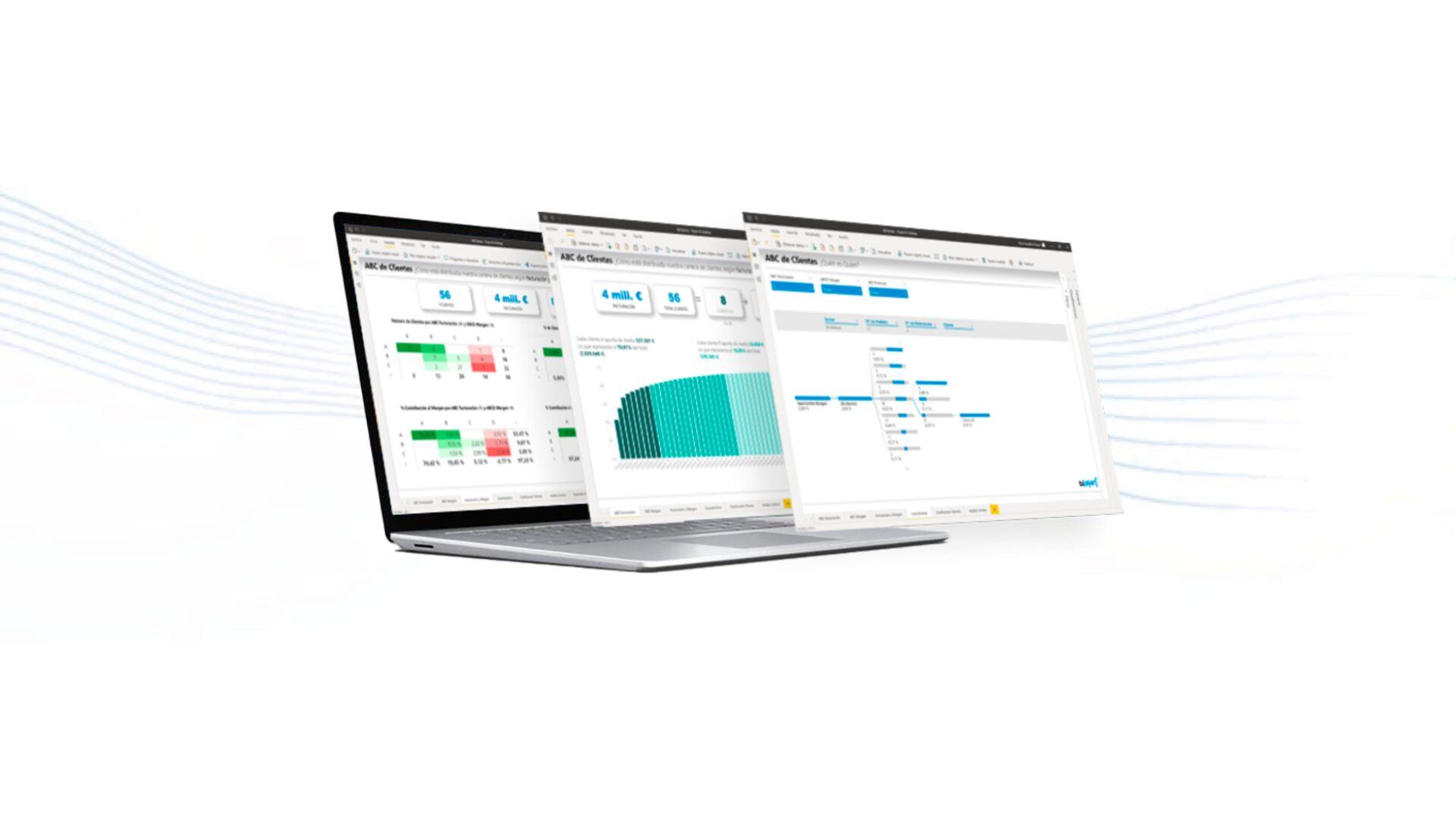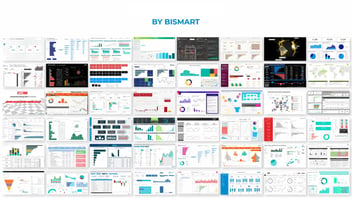Learn how Balanced Scorecard integration and agile methodologies can transform project management in dynamic organizations.
The Balanced Scorecard (BSC), developed by Robert Kaplan and David Norton in the 1990s, is a strategic tool that converts a company's vision into measurable and balanced objectives.
Agile methodologies, rooted in business agility principles and popularized by the Agile Manifesto in 2001, are flexible, iterative approaches to project management. They promote collaboration, adaptability, and continuous value delivery, allowing teams to quickly respond to change and improve efficiency through short feedback cycles and incremental improvements.
Integrating the Balanced Scorecard with agile methodologies combines strategic structure with operational flexibility, enabling organizations to maintain strong strategic alignment while adapting swiftly to changing market conditions. This synergy enhances operational efficiency, customer satisfaction, and the achievement of strategic objectives.
Balanced Scorecard: Definition
The Balanced Scorecard (BSC) is much more than a traditional management tool; it is a strategic framework that enables organizations to turn their ambitions and visions into specific, measurable actions.
The BSC offers companies a way to assess their performance from a variety of perspectives, ensuring that they not only focus on financial results, but also consider other factors critical to long-term success.
Guide: Enterprise Performance Evaluation
Discover how to evaluate performance and develop your company's strategic plan: from the Balanced Scorecard to strategic objectives, action plans and KPIs.
BSC: What and Why
The Balanced Scorecard organizes business strategy around four key perspectives: financial, customer, internal processes, and learning and growth.
Each perspective offers a unique and complementary view of business performance, allowing companies to assess their progress holistically.
The Four Perspectives of the Balanced
- Financial: This perspective measures profitability and financial growth, using indicators such as return on investment (ROI) and profit margin to assess whether strategies are generating expected economic results.
- Customer: This perspective measures customer satisfaction and loyalty. Indicators like Net Promoter Score (NPS) and market share help understand customer perceptions of the company's products and services and whether their needs and expectations are being met.
- Internal Processes: This perspective focuses on the efficiency and effectiveness of operational processes. Metrics such as product quality, cycle times, and operational efficiency help identify areas for improvement.
- Learning and Growth: This perspective focuses on employee development and the organization's ability to innovate and adapt. Indicators like employee training and satisfaction help identify areas for improvement within internal processes.
- Align day-to-day activities with the strategic vision: Ensuring everyone in the organization understands and works toward the same goals.
- Improve internal communication and collaboration: Facilitating a common language and a coordinated approach to achieving goals.
- Foster continuous improvement and innovation: Monitoring and adjusting strategies based on concrete data and performance indicators.
In essence, the Balanced Scorecard is a strategic roadmap guiding companies toward operational excellence and lasting value creation.

What are Agile Methodologies?
In the fast-paced world of project management, where change is the only constant, agile methodologies have emerged as a flexible and efficient response to the demands of a dynamic business environment.
Originating in the software industry in the early 2000s, these methodologies promote adaptability, continuous collaboration, and incremental product delivery, revolutionizing how organizations manage their projects.
Agile Methodologies: Definition
Agile methodologies are project management approaches designed to foster flexibility and rapid responsiveness to change. Instead of following a rigid, linear plan, agile methodologies focus on short cycles of work known as iterations or sprints.
Each iteration results in the delivery of a functional product, allowing for continuous adjustments and improvements based on feedback received during the process.
Top Main Agile Methodologies
Scrum
Scrum is one of the most popular agile methodologies, characterized by its iterative and incremental structure. Projects are divided into short cycles called sprints, usually lasting between two and four weeks. Each sprint culminates in the delivery of an incremental product that can be evaluated and adjusted as needed.
Scrum teams are organized into specific roles: the Scrum Master, who leads the process; the Product Owner, who represents the customer's interests; and the development team, which carries out the work.
Kanban
The Kanban methodology focuses on visual workflow management to improve efficiency and transparency. It uses a Kanban board, divided into columns representing different stages of the work process, to visualize task progress.
Kanban cards, representing individual tasks, move across the board as they progress through the process. This methodology allows teams to identify bottlenecks and optimize workflows, promoting continuous and smooth delivery.
Lean
The Lean method originated in the manufacturing industry with the goal of minimizing waste and maximizing customer value. Applied to software development and project management, Lean focuses on optimizing processes by eliminating activities that do not add value.
This is achieved through principles such as continuous improvement (kaizen), rapid delivery, and efficiency in resource use. Lean seeks to create more value with fewer resources, improving quality and speed of delivery.
Benefits of Agile Methodologies
Agile methodologies offer numerous benefits that have led to their widespread adoption in various industries:
- Adaptation to Change: They enable teams to respond quickly to changes in requirements and the project environment, ensuring that the final product meets customer expectations.
- Increased Efficiency: They promote waste elimination and process optimization, resulting in higher productivity and faster delivery.
- Team and Customer Satisfaction: They foster a culture of collaboration and transparency, improving team morale and customer satisfaction through continuous value delivery.
In short, agile methodologies have transformed project management by placing a strong emphasis on flexibility, collaboration, and continuous improvement.
Guide: Enterprise Performance Evaluation
Discover how to evaluate performance and develop your company's strategic plan: from the Balanced Scorecard to strategic objectives, action plans and KPIs.
Why Should You Integrate the Balanced Scorecard with Agile Methodologies?
In today's rapidly changing business environment, project management is increasingly complex and challenging.
Dynamic organizations must overcome several hurdles to stay relevant and competitive. Two powerful tools to address these challenges are the Balanced Scorecard (BSC) and agile methodologies.
By integrating them, companies can leverage the strategic structure of the BSC and the flexibility of agile methodologies.
Project Management Challenges in Dynamic Companies
- Constant Change: In a globalized market, economic, technological, and social factors can cause conditions to change rapidly. Companies must adapt quickly to remain competitive. This requires a management approach that allows for rapid adjustments without losing sight of strategic objectives.
- Need for Rapid Innovation: The fast pace of technological development and changing customer expectations necessitates continuous innovation. With shorter product lifecycles, companies must launch new solutions faster than ever before, creating constant pressure to deliver value quickly and efficiently.
- Coordination Between Teams: In large, complex organizations, coordinating different teams and departments can be a major challenge. Without proper alignment, efforts can be duplicated or, worse, teams can work at cross purposes. A unified vision and coherent strategy are crucial to ensure everyone in the organization works towards the same goals.
Benefits of Integrating the Balanced Scorecard and Agile Methodologies
Improved Strategic Alignment
Agile methodologies are known for their ability to adapt quickly to change, which is vital for responding to new opportunities and challenges. However, rapid adaptation is only effective if it aligns with the organization's overall strategy.
This is where the Balanced Scorecard comes in, providing a structured framework to ensure all tactical activities and adjustments are in line with strategic objectives. Integrating the BSC with agile methodologies ensures that each iteration and sprint contributes to achieving strategic goals.
Process Optimization
Integrating the Balanced Scorecard and agile methodologies facilitates continuous improvement and operational efficiency.
Agile promotes incremental delivery and continuous feedback, allowing for quick and efficient process adjustments. Simultaneously, the BSC provides a framework for measuring and monitoring these processes through key performance indicators (KPIs), ensuring that improvements are sustainable and aligned with the long-term strategy.
In summary, integrating the Balanced Scorecard and agile methodologies offers a robust solution to the challenges of project management in dynamic organizations. This combination not only improves adaptability and operational efficiency but also ensures that efforts are strategically aligned, providing a sustainable competitive advantage in a constantly evolving business environment.
Steps for Integrating the Balanced Scorecard with Agile Methodologies
1. Assessment of the Current Situation
The first step in integrating the Balanced Scorecard (BSC) with agile methodologies is to conduct a detailed assessment of the organization's current situation.
This analysis should focus on understanding the existing organizational structure and management practices. Identifying strengths, weaknesses, opportunities, and threats is critical.
This includes assessing internal processes, organizational culture, available technology, and staff capabilities. This phase provides a solid foundation for determining how agile methodologies and the BSC can complement and enhance existing practices.
2. Defining Strategic Objectives and Agile KPIs
Once the current situation is understood, the next step is to define the strategic objectives the organization aims to achieve.
These objectives should be specific, measurable, achievable, relevant, and time-bound (SMART). It is crucial to align these objectives with the principles of agility to ensure they can adapt to rapid and continuous change.
Additionally, agile KPIs must be established to monitor progress towards these objectives, providing continuous and relevant feedback to adjust strategies in real time.
Guide: Enterprise Performance Evaluation
Discover how to evaluate performance and develop your company's strategic plan: from the Balanced Scorecard to strategic objectives, action plans and KPIs.
3. Implementation of Agile Methodologies within the BSC Framework
With strategic objectives and KPIs defined, it's time to implement agile methodologies within the alanced scorecard framework. This involves adapting agile practices such as Scrum or Kanban to the four perspectives of the BSC: financial, customer, internal processes, and learning and growth.
For example, Scrum sprints can be aligned with BSC review cycles to ensure each iteration is evaluated and adjusted based on results.
Similarly, Kanban boards can be used to visualize workflow and ensure all activities align with strategic objectives.
4. Continuous Monitoring and Adjustment
The final step in this process is continuous monitoring and adjustment.
Regular performance evaluations using established agile KPIs are vital. This helps ensure that objectives are being met, identify areas for improvement, and adjust strategies as needed.
The flexibility of agile methodologies complements the structured approach of the BSC, creating a constant feedback loop that encourages continuous improvement and adaptability.
Conclusion
Integrating the Balanced Scorecard (BSC) with agile methodologies in project management offers significant benefits. Combining the strategic structure and holistic perspective of the BSC with the flexibility and responsiveness of agile methodologies allows organizations to achieve greater strategic alignment, process optimization, and continuous improvement. This integrated approach enables companies to adapt quickly to change while maintaining a clear and consistent vision of their long-term goals.
In a dynamic and constantly evolving business environment, adaptability and continuous improvement are key to success. The integration of BSC and agile methodologies equips organizations with the necessary tools to navigate these challenges effectively. By fostering a culture of flexibility and strategic alignment, companies can not only adapt quickly to change but also maintain a clear and consistent vision of their long-term goals.



